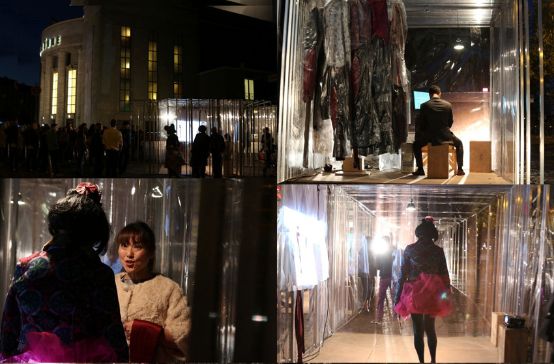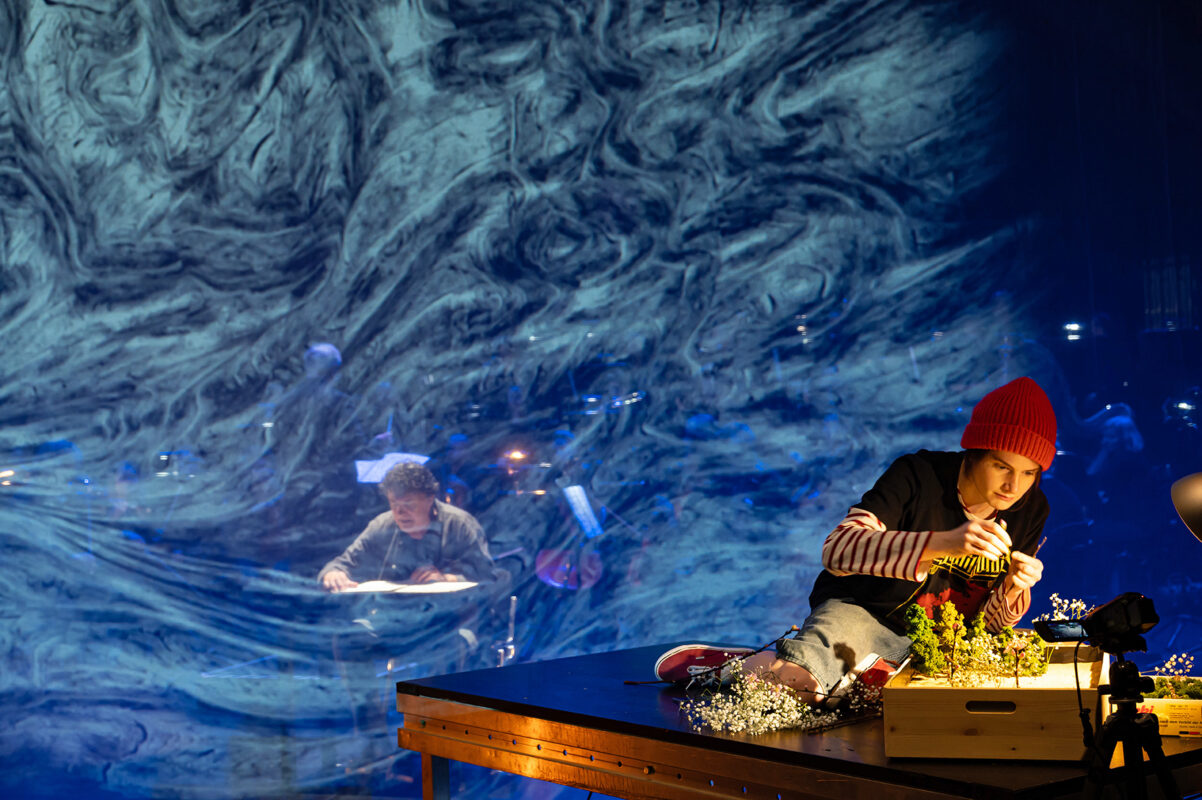Play along in passing
The opera company Novoflot is on tour with experimental music theater.

What happens when the subsidized (music) theater landscape collapses? What can be the answer if the traditional institutions no longer offer a framework for artistic expression? What strategies and forms could be used to artistically counter this impending sell-out of culture?
In times of omnipresent financial difficulties and austerity measures, the questions that the independent opera company Novoflot is asking itself as part of the project T-house tour presents. From October 16 to 19, 2014, the second part of the multi-stage music theater experiment took place on the forecourt of Berlin's Volksbühne am Rosa-Luxemburg-Platz. To this end, the Berlin architectural group Graft, together with stage designer Annamaria Cattaneo, erected a transformable building made up of flexible modules in the public space, the "transforming house". Metal struts and heavy, transparent plastic sheets are the material used to assemble the various square rooms. Hanging in them are colorful, Asian-style costumes, also wrapped in plastic, and various accessories define the rooms according to specific functions. One is set up as a kind of music room with a guitar amplifier and drum kit, there is an office with a computer and keyboard, on the screen a dialog about captivity. In another room there is a microphone and a loop station.
For six hours a day, various artists perform in this setting in an impenetrable sequence of improvisation and staging (composition: Michael Werthmüller, direction: Sven Holm). The audience can move around, sometimes influencing the events, but mostly just opening their eyes and ears in amazement at what is combined here in terms of sound and context. In one of the rooms, for example, trombonists Nils Wogram and Conny Bauer improvise together while actor Raphael Clamer speaks a text into a recording device: "I have given up on being an intelligent person ..." Possibly the right attitude of reception for such a multi-layered event, the complexity of which can never be fully grasped. Two elderly ladies, dressed in exuberant costume mixtures of dirndl and kimono, speak sentences into the loop device. Detached from the body, the voices repeat: "Can I smoke while I eat?" and "I'll say it in Friedenauisch!" Raphael Cramer plays these interjections distorted, chopped up, backwards. Meanwhile, the singer Yuka Yanagihara and the dancer Ichi-Go have sat down on the floor in one of the other rooms and begin a hysterical conversation in Japanese.
The conductor Vicente Larrañaga, dressed in black, acts silently and inconspicuously, but like a secret master of ceremonies. Yuka Yanagihara, whose costume is reminiscent of a Japanese schoolgirl, leaves the venue and crosses the street. From there, accompanied only by the two trombones, she sings with her melodious soprano: "Recognize where your true measure ..." Passers-by stop and film this unusual street scene with their smartphones. Their comments and conversations, the background noise of the city and, in particular, the fight of several dogs somewhere at the other end of the square are mixed into the singing. Guitarist John Schröder begins an improvisation with the two trombonists, in the course of which he in turn uses the loop device and also reveals himself to be a gifted drummer. The concentrated energy of this session heats up the small, enclosed space, while outside a group of children play tag between the hanging pieces of foil. When the musicians stop playing, the intensity of their encounter reverberates in the silence for a long time. Outside, a boy calls loudly for his friend: "E-li-as!!!"
What Novoflot has achieved here is nothing less than a fusion of art and public space. And a number of questions immediately arise: Where is the boundary between actor and spectator? Is it possible to tell the difference between staging and improvisation? And what part does each individual play in what happens in public? These questions also resonate and arouse curiosity about the next stages of this open musical theater.
Direction: Sven Holm, musical direction: Vicente Larrañaga, dramaturgy: Malte Ubenauf, stage: Graft Architekten and Nino Tugushi, costumes: Sara Kittelmann, composition: Michael Wertmüller, texts: Jürg Laederach, video: Karolina Serafin, Lighting: Jörg Bittner, Graphics: Emanuel Tschumi, production management: Dörte Wolter







